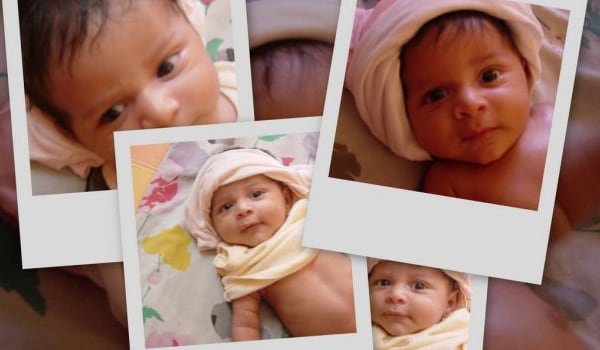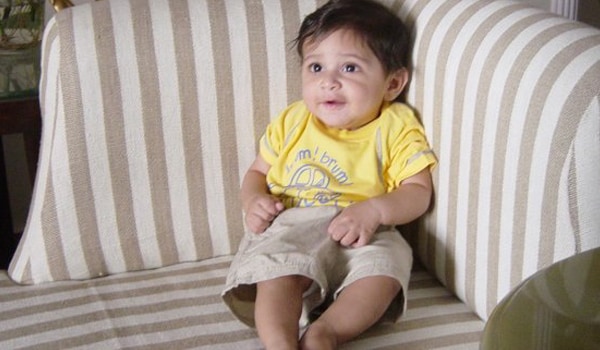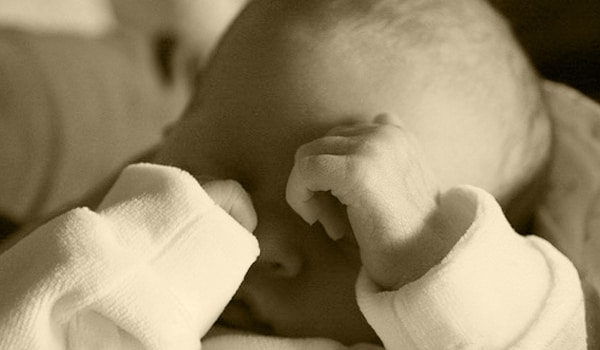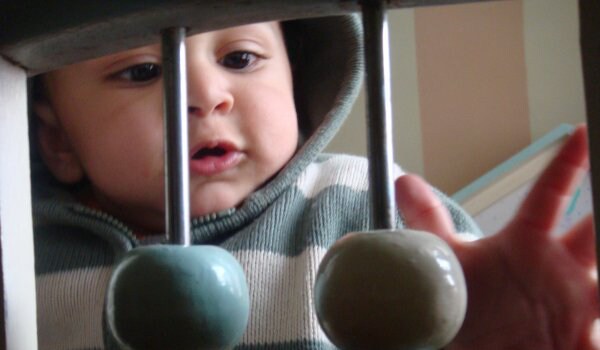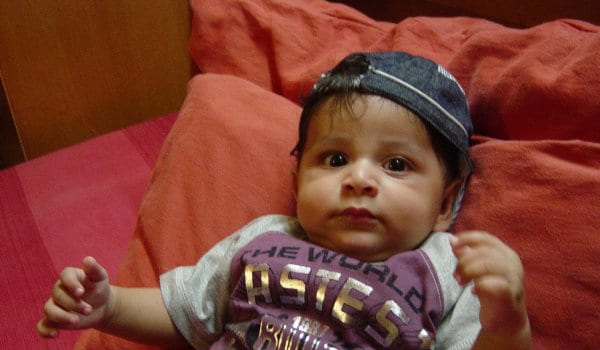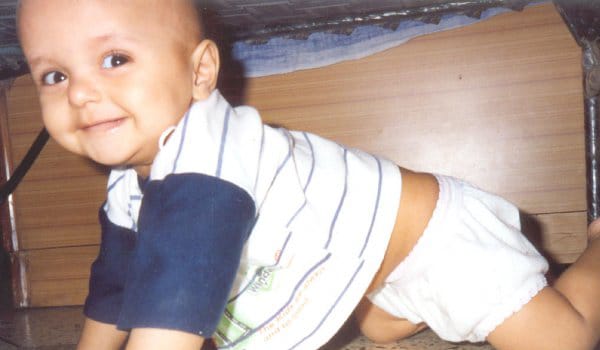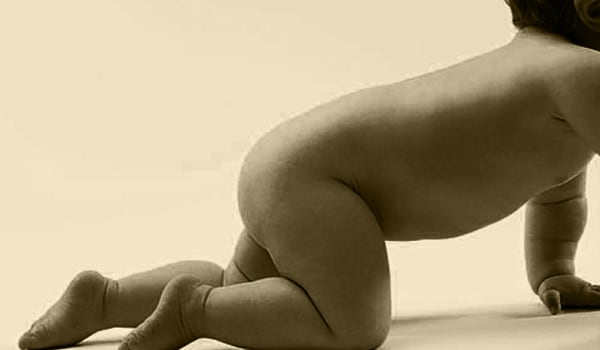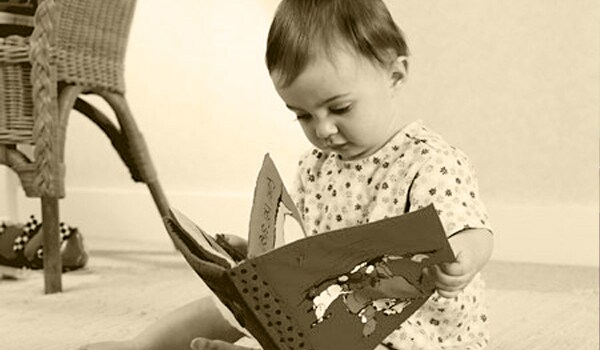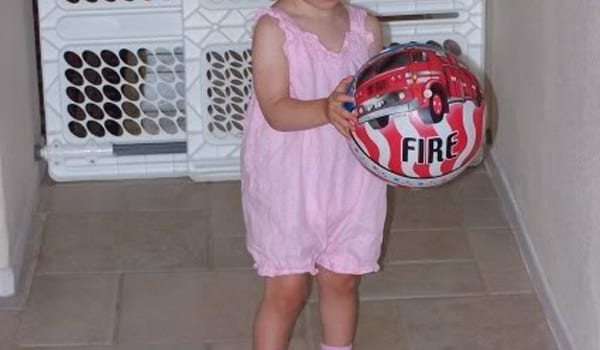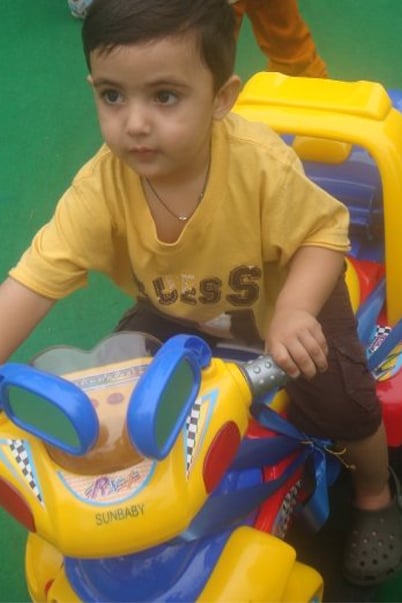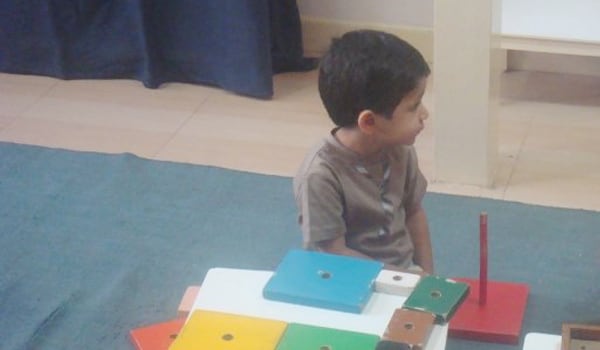Health Photos
-
Watching a baby grow is a fascinating and unique experience for the parents. A child's growth is a complex and continuous process. They should be able to do certain things at certain ages. These are called developmental milestones. As a parent, it is important to realize that no two children develop at the same rate. It is, therefore, futile to worry that the child next door can do this and that, while ones own child cannot. At the ages noted for different activities, the child should be observed for some time.
-
2 months - social smile
4 months - holding neck
8 months - sitting without support
12 months -- standing
- can spot small moving objects on the floor (vision test)
- can hear distant sounds (hearing test)
-
- Baby lies on the back with head turned to one side
- Sudden noise startles him making the body stiff
- The fists are clenched
- He may grasp an object touched to his palm crudely; this is the grasp reflex
-
- He learns to hold his head better
- He is able to fix his eyes on objects
-
- While lying on the back the baby moves each of his arms and legs equally well. Movements are not jerky or uncoordinated movements. The child makes gurgling sounds and other noises besides crying.
- The baby recognizes the mother and responds to her voice.
- The child's hands are frequently open.
- When the child is held upright he is able to support his head for more than a moment.
-
- The baby plays with his hands by touching them together.
- The child turns his head to sounds that are made around him.
- The baby can roll over from his stomach to his back or from his back to his stomach.
- He may be able to sit briefly with support.
- When the baby is held up, he is able to bear some weight on his legs.
- When he is on his stomach, he can support his weight on outstretched hands.
-
- He is able to sit without support and without holding up his body with his hands.
- He is able to crawl or creep on his hands and knees.
-
- The baby pulls up to stand.
- He begins to say words like 'mama'.
- The baby is able to walk holding on to furniture.
-
- The child can hold a glass without help and drink from it without spilling.
- He can walk all the way without support across a large room without falling or wobbling.
- He can say a couple of words.
- He is able to feed himself.
-
- He can take off some clothes such as pajamas.
- He is able to run without falling.
- He takes interest in pictures in a picture book.
- He is able to say what he wants.
- He begins to repeat words others say.
- He is able to point to some parts of his body.
-
- He is able to throw a ball overhand (not sidearm or underhand).
- He can answer simple questions like "Are you a boy or a girl?".
- He helps put things away.
- He can name at least one colour.
-
- He is able to pedal a tricycle.
- He can name pictures in books or magazines.
-
- He can button some of his clothing.
- He names at least three colours.
- He can walk down stairs alternating his feet.
- He can jump with his feet apart.


